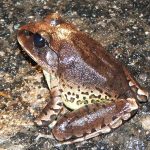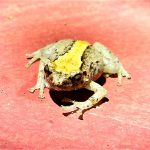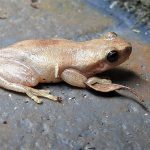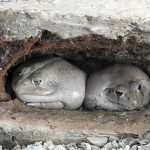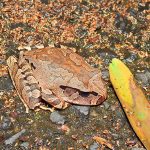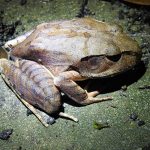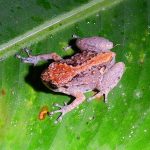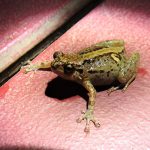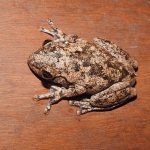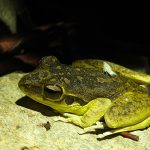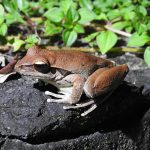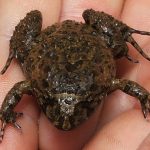MORE AUSTRALIAN FROGS
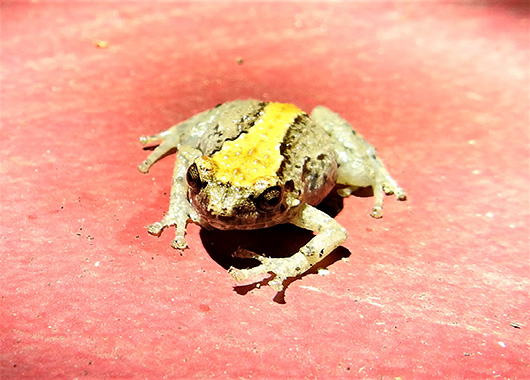
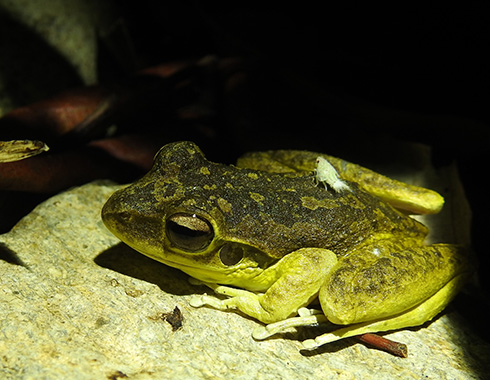
The inelegant frog (Cophixalus infacetus) is in the family Microhylidae, and it is also known by other common names, such as the Creaking frog or the Creaking nursery frog.
The Creaking nursery frog is a small frog species native to Australia. As its common name suggests, it is known for its distinctive creaking call, which is often heard during the breeding season.
Like many other microhylid frogs, it has a compact body and is typically found in moist forest habitats, including rainforests and wet sclerophyll forests.
The Northern stony creek frog (Litoria jungguy) is endemic to the northern regions of Australia. It belongs to the family Hylidae, which includes tree frogs and their close relatives. The Northern stony creek frog is primarily found in the northern parts of the Northern Territory and in parts of Western Australia.
This species is typically found in rocky habitats, especially in and around stony creek areas, from which it gets its common name. It prefers to inhabit watercourses, gorges, and other rocky environments in tropical and subtropical regions.
The Northern stony creek frog is a small to medium-sized frog with a slender body. Its coloration can vary, but it often has shades of brown or green with darker markings, helping it blend in with its rocky surroundings.
Like many other frog species, Litoria jungguy breeds in water bodies. During the breeding season, males produce a series of distinctive calls to attract females. The eggs are laid in water, and the tadpoles undergo metamorphosis to become adult frogs.
Conservation status: As with many amphibian species, the northern stony creek frog faces threats from habitat loss and degradation, as well as potential impacts from climate change. Monitoring and conservation efforts are important to protect this species and its natural habitat.
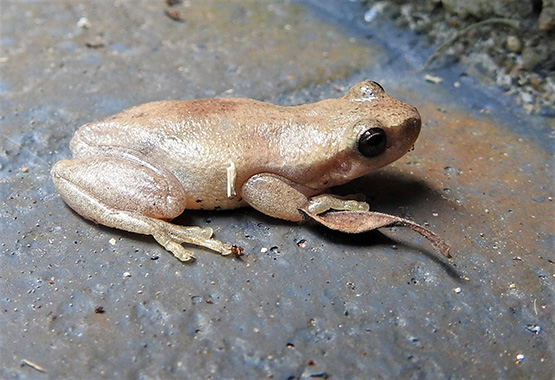
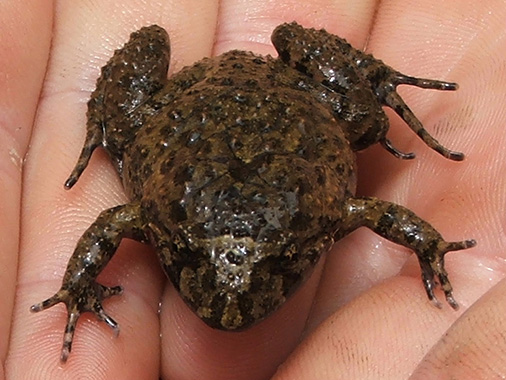
The Desert tree frog (Litoria rubella), also known as the Little red tree frog, is a small to medium-sized frog with a slender body. It is known for its vibrant red or orange coloration, which can vary in intensity depending on factors such as temperature and humidity. It has large, adhesive toe pads that help it climb trees and other surfaces.
The desert tree frog is native to arid and semi-arid regions of Australia, primarily found in the northern and western parts of the country. It inhabits various habitats, including desert areas, woodlands, and rocky outcrops.
Like many tree frogs, Litoria rubella is nocturnal, becoming active at night when temperatures are cooler. During the day, they seek shelter in crevices, under rocks, or in tree hollows to avoid the intense heat.
Breeding usually occurs during the wet season when there is an increase in rainfall. Males attract females with their calls, which are typically heard near water bodies. Females lay their eggs in water, and the tadpoles hatch and develop in the aquatic environment.
The desert tree frog has adapted to survive in arid conditions. It can tolerate higher temperatures than many other frog species and has unique physiological adaptations to cope with water loss.
The calls of Litoria rubella are distinct and can vary among individuals. The male’s call is a series of harsh, grating notes that serve to attract females and establish territory.
The Tusked frog (Adelotus brevis) is a species of frog belonging to the family Limnodynastidae. It is native to eastern Australia and is primarily found in the states of Queensland and New South Wales.
The Tusked frog is a medium-sized frog with a stout body. It derives its common name from the small, pointed projections (tusks) on the lower jaw of adult males. These tusks are used during male-male competition and are not present in females.
Tusked frogs inhabit a variety of freshwater habitats, including ponds, swamps, marshes, and slow-moving streams in forests and woodlands. They prefer areas with ample vegetation and water bodies that offer suitable breeding sites.
Tusked frogs are primarily nocturnal and become more active during the breeding season, which typically occurs during the warmer months. They are skilled burrowers and often dig into the substrate to create shelter and find prey.
These frogs are carnivorous and mainly feed on various invertebrates, such as insects, spiders, and other small aquatic organisms.
During the breeding season, males call loudly to attract females. The males also engage in aggressive behaviors to establish dominance and secure breeding territories. Once mating occurs, females lay their eggs in the water, and the tadpoles hatch and undergo metamorphosis to become juvenile frogs.
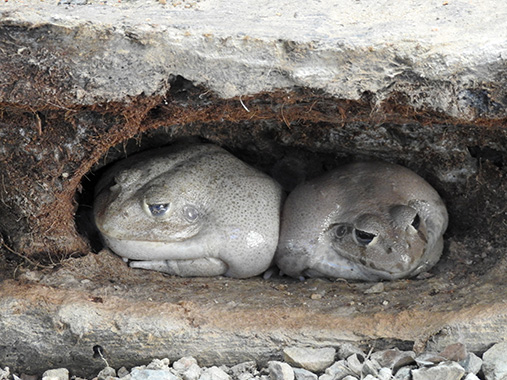
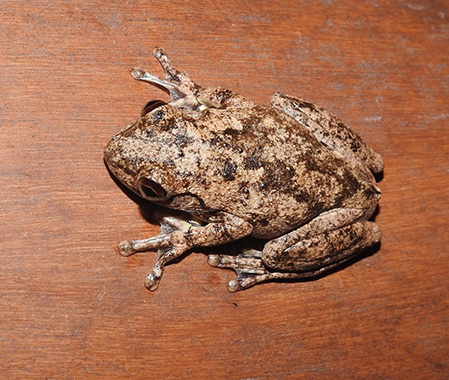
The Water-holding frog (Ranoidea platycephala )is a small to medium-sized frog with a distinctive appearance. It has a broad and flat head, which is one of the reasons for its scientific name “platycephala,” meaning “flat head.” The skin on its back is rough and granulated. It belongs to the family Hylidae, which includes tree frogs and their relatives.
This frog is typically found in a range of habitats, including woodlands, grasslands, and open forests. It prefers areas with access to temporary water sources, such as rain-filled depressions, ponds, and flooded areas.
The Water-holding frog is nocturnal and becomes more active during wetter periods. It has a remarkable adaptation for survival in arid environments. During dry periods, it burrows into the ground and forms a cocoon around itself by shedding its outermost skin layers. The cocoon helps retain moisture, allowing the frog to survive without water for long periods.
Breeding occurs when there is an increase in rainfall, leading to the formation of temporary water bodies. The female lays her eggs in the water, and the tadpoles hatch and develop in the aquatic environment.
One of the most fascinating features of the water-holding frog is its ability to store water. During the wet season or after heavy rainfall, it absorbs water through its skin and swells up. This water storage helps the frog survive extended periods of drought.
Roth’s tree frog (Litoria rothii), also known as the Northern laughing tree frog, is a species of tree frog found in northern Australia.
Roth’s tree frog is a medium-sized frog with a robust body and a distinctive appearance. It has large eyes and slender limbs, which are adapted for climbing. The coloration of this frog can vary, but it often has shades of green or brown with dark markings on its back.
As the common name “Northern laughing tree frog” suggests, this species is primarily found in the northern regions of Australia, particularly in the tropical and subtropical parts of Queensland, the Northern Territory, and Western Australia.
Roth’s tree frog is an arboreal species, meaning it spends much of its time in trees and shrubs. It is commonly found in rainforests, wet sclerophyll forests, and other areas with suitable vegetation near water sources.
As with most tree frogs, Litoria rothii is nocturnal and becomes more active during the night. It has a distinctive call that sounds like a chuckling laughter, hence the name “laughing tree frog.”
Breeding typically occurs during the wet season when there is an increase in rainfall. Males call to attract females, and breeding takes place in water bodies such as ponds, swamps, and streams. Females lay their eggs in water, and the tadpoles hatch and undergo metamorphosis to become juvenile frogs.

